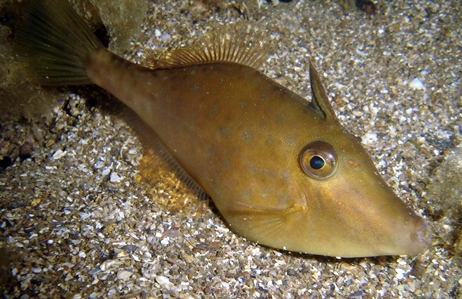General Description
Body oblong, moderately deep (elongate in males, deeper in females); ventral flap moderate; head pointed; central pair of teeth in upper jaw truncate, those opposite in lower jaw more pointed; males with a large toothbrush like patch of long bristles on sides, bristles poorly developed in females and juveniles. Males brown to blackish blue, with blue lines and spots, a prominent pale band from eye to bristle patch, tail dusky with pale margin; females yellowish-brown to brown, with scattered pale blotches and dark brown spots on side of body; juvenile similar with a broad white stripe along body. To 32 cm.
Biology
These leatherjackets are abundant along Victorian and Tasmanian coasts.
Habitat
Juveniles often under floating weed rafts, moving to seagrass beds as they grow, before migrating to deeper reefs.
Reefs
Seagrass meadows
Distribution guide
Southern Australia.
Species Group
Depth
Water Column
Max Size
32 cm
Diet
Carnivore
Harmful
Large dorsal spine could punture skin.
Commercial Species
No
Global Dispersal
Native to Australia
Identify
Conservation Status
- DSE Advisory List : Not listed
- EPBC Act 1999 : Not listed
- IUCN Red List : Not listed






